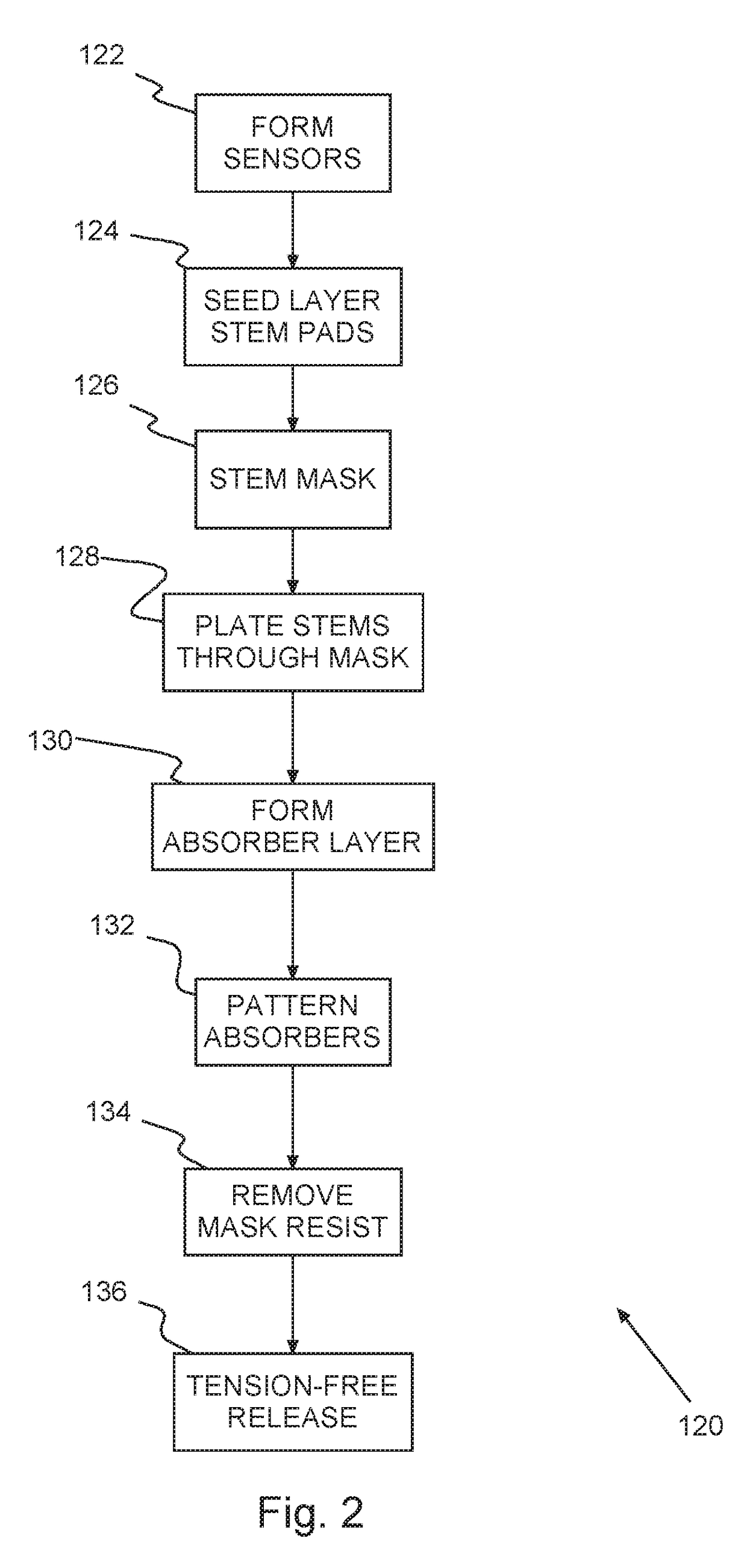Method of fabricating x-ray absorbers for lowenergyx-ray spectroscopy
- Summary
- Abstract
- Description
- Claims
- Application Information
AI Technical Summary
Benefits of technology
Problems solved by technology
Method used
Image
Examples
Embodiment Construction
[0013]Turning now to the drawings and more particularly FIG. 1 shows an example of an ideal large, thin low-energy x-ray pixel 100 for use in high-resolution x-ray microcalorimeters with an absorber 102 formed on a wafer, e.g., a semiconductor wafer, according to a preferred embodiment of the present invention. For sensing low-energy x-rays 104 striking the preferred absorber 102, the preferred absorber 102 is much larger and thinner than prior higher energy x-ray absorbers. An underlying sensor 106 is in intimate contact with, and senses heat generated in, the absorber 102. A stem extending through the sensor 106 to the absorber 102 may pass heat from the absorber 102 to the sensor 106, which couples 108 the sensor 106 response to readout electronics (not shown). The stem of this example also acts as thermal link 110 coupling the sensor 106 to a thermal bath 112, e.g., an underlying semiconductor substrate supporting the pixel 100.
[0014]Incoming energy (from low energy x-rays) 104 ...
PUM
 Login to View More
Login to View More Abstract
Description
Claims
Application Information
 Login to View More
Login to View More - R&D
- Intellectual Property
- Life Sciences
- Materials
- Tech Scout
- Unparalleled Data Quality
- Higher Quality Content
- 60% Fewer Hallucinations
Browse by: Latest US Patents, China's latest patents, Technical Efficacy Thesaurus, Application Domain, Technology Topic, Popular Technical Reports.
© 2025 PatSnap. All rights reserved.Legal|Privacy policy|Modern Slavery Act Transparency Statement|Sitemap|About US| Contact US: help@patsnap.com



